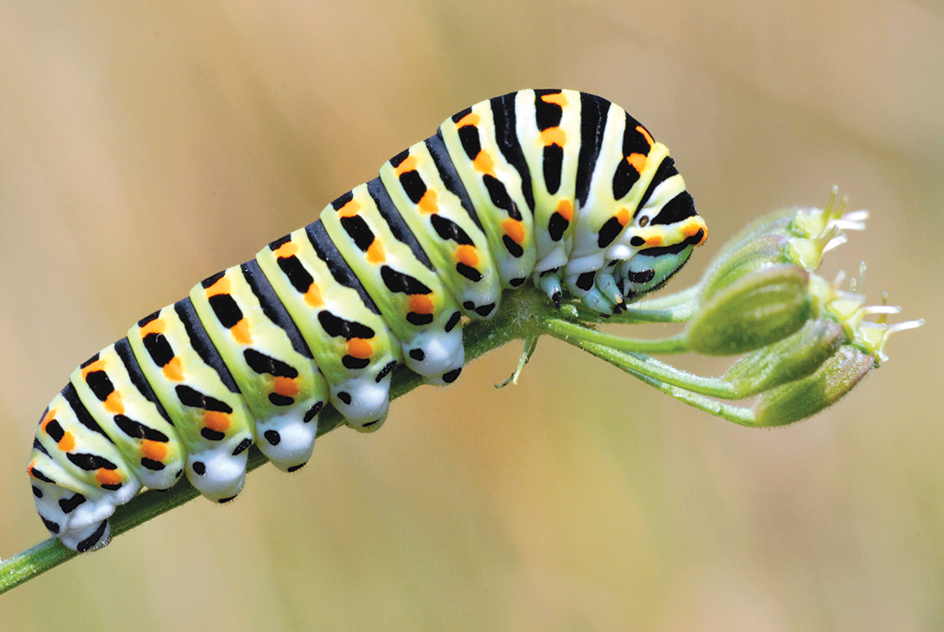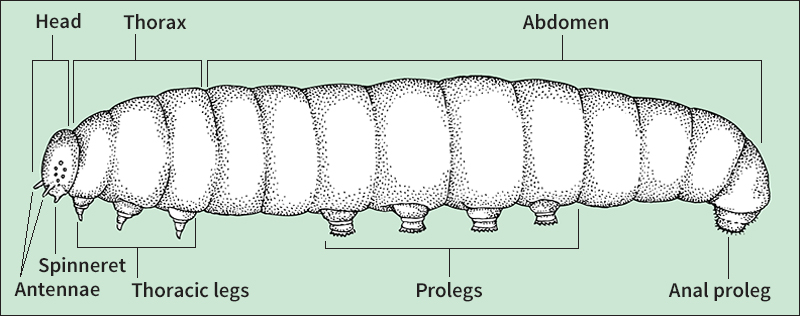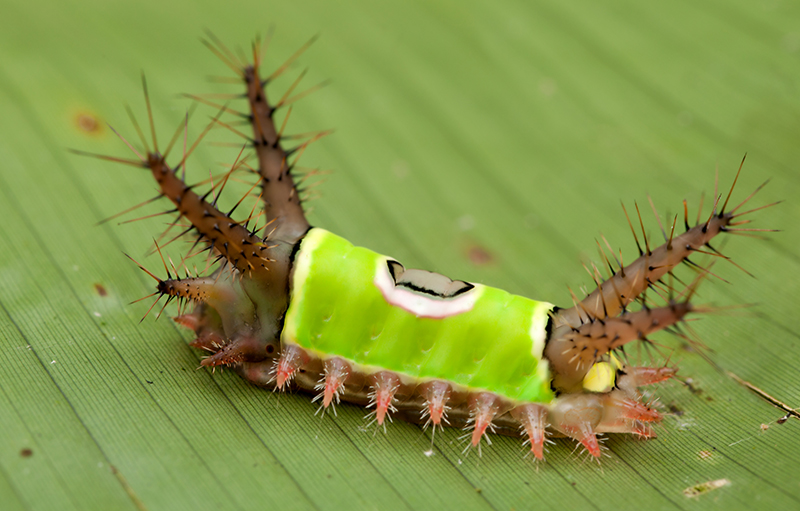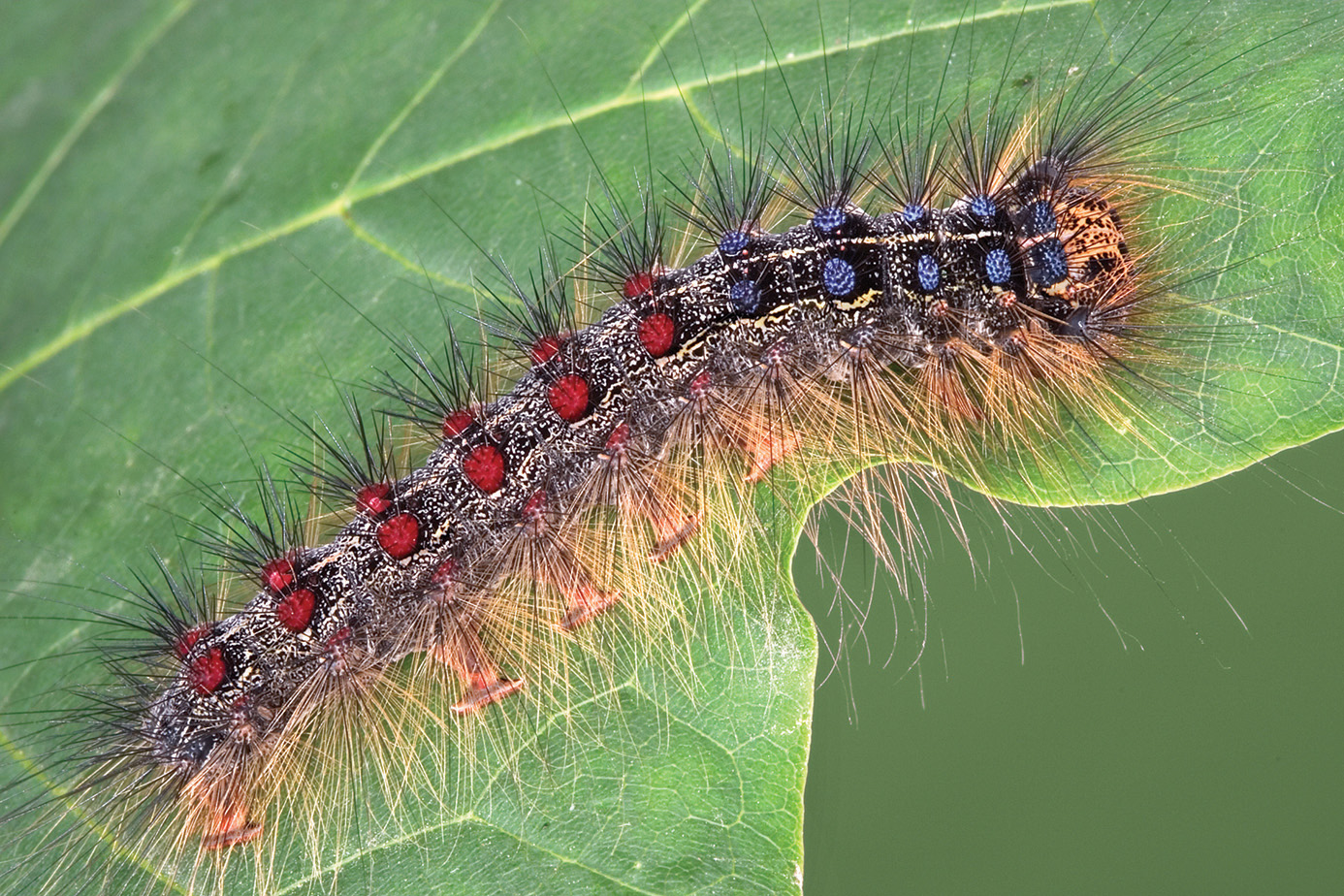Caterpillar is a wormlike creature that is the second, or larval, stage in the life history of butterflies and moths. When a butterfly or moth egg hatches, a tiny caterpillar crawls out and begins to eat. The caterpillar grows, but its skin does not grow with it as does the skin of most animals. Soon the skin becomes too tight, and a split appears near the head end. The caterpillar then wriggles out of the old skin. It now has a new soft skin that had formed under the old one. This skin, too, is soon outgrown, and the process is repeated a number of times. Eventually, the butterfly or moth caterpillar becomes a pupa, the insect’s third stage of development. The pupa, in turn, develops into an adult. Most caterpillar stages last from two to four weeks. In cold climates, some butterflies and moths take two to three years to pass from egg to adult.

Appearance.
A caterpillar has 13 body segments, not including the head. To each of the first three segments is attached a pair of five-jointed legs. These develop later into the legs of the adult insect. There usually are four or five pairs of fleshy prolegs on the abdomen. These are not true legs, and they are absent in the adult. Prolegs may have crochets (hooks) on the tips. Caterpillars called measuring worms possess only two or three pairs of prolegs on the abdomen, and they move by drawing these hind legs up to the front three pairs. The head of a caterpillar has six simple eyes on each side. It also has a pair of short antennae (feelers) that enable the larva to guide itself. A caterpillar’s strong, biting jaws differ from the sucking mouthparts of an adult. The larva’s body may be naked or covered with bristles, spines, or hairs.


Habits.
Most caterpillars eat plants. A butterfly or moth does all of its growing during the caterpillar stage. The larva stores up nutrients (nourishing substances) that it later uses to become the pupa and eventually the adult insect.

A few larvae, including silkworms, are prized by people, but most are not. When caterpillars become numerous, they may strip the vegetation from fields and the leaves from trees. Cabbage worms, spongy moth caterpillars, cotton worms, corn earworms, armyworms, and cutworms have all become serious pests.
